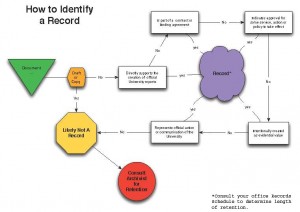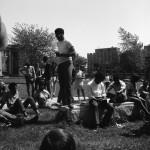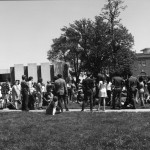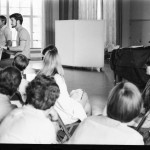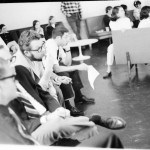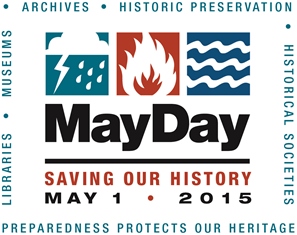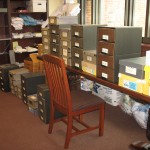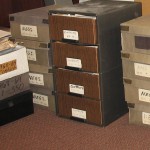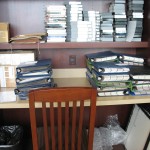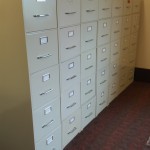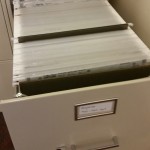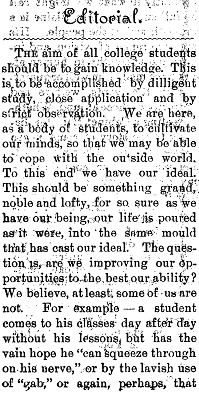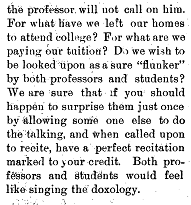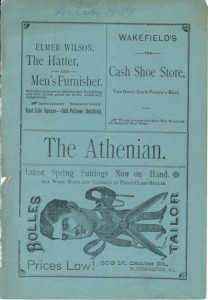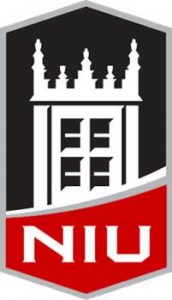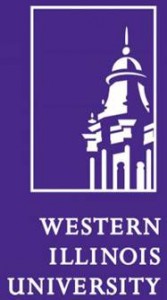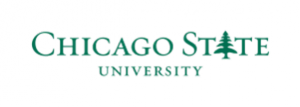The evolution of the German Department as seen in the Catalogue of Courses. Course catalogs from 1851-1954 are available online; the rest are available in print in the University Archives.
Tutoring in German was available on request in IWU’s first course catalog of 1851-52 and then show a dedicated faculty member starting in the second catalog which was published five years later.
1857-65: German and French listed as electives in the “Classical” degree track (the only other track available was “Scientific”) for Junior year.
1892-1893: German and French languages taught together, but a more in-depth time and practice are spent on German even briefly letting students “in which the instructor uses the German language in order the better to familiarize the pupils with ordinary idioms, not necessarily met with in their reading” (16). Also includes an advanced class that studies the works like Goethe’s Hermann und Dorothea and Sesenheim; Freytag’s Journalisten, and Scheffel’s Ekkehard (30).
Focus still on ancient languages of Greek and Latin
1895: First year as a major. Separate listing of German as Course C of language after Greek and Latin. It is also described as adding a third year compared to the previous two year policy and a detailed description of this third year of study consists of reading of historical prose and the study of German Literature. The catalogue says that “German will be largely the language of the classroom throughout the year, and the student will be encouraged to continue in private the study of a most valuable language, which these three years of training ought to make easy and attractive” (28).
1900: Classified as a Modern Language (rather than Ancient language) and has 12 classes of study listed.
1910: Still offered as a three year program, but is more specifically divided into three sections of work. First Year: Mastery of the essentials of grammar, composition, conversation and pronunciation, and 150 pages of easy prose.
Second Year: Advanced grammar and syntax when writing German. Reading of more difficult authors covering 250 to 300 pages.
Third Year: Reading of selected poetical and historical prose works.
1920: German classes increase from general study of the language to more specific categorical classes such as The German Novel of the Nineteenth Century, The Drama of the Nineteenth Century, Goethe and Schiller, History of the German Language, Scientific German.
1930: Direct Listing of Major and Minor Status-Major 24 semester hours and Minor 12 semester hours-Same listing of classes.
German Club Present in 1930 catalogue-Described as “The German Club meets the needs of students of this language in providing extra-curricular opportunity for personal contacts and for attaining proficiency in conversation”(112). Club helped by Professor Ferguson-see next page
1940: Additional classes of Survey of German Literature and German Conference added to German course of classes and it is also in this catalog that Spanish appears as an additional modern language of study.
1950: Only listing of German as a foreign language and only First and Second Year German taught-So only 4 sections of basic language study and small compared to French and Spanish department.
1960: Return of 100 to 400 level German Language classes-Additions of German Composition and Conversation, Goethe’s Faust, Senior Review, and History of German Literature. Ferguson not listed-Emeritus- died on May 9, 1944.
1970: German interestingly is now placed before either Greek or Latin in the catalogue listing. Also a few more classes included such as Survey of German Literature Before 1700, Survey of German Literature After 1700, Contemporary German Literature, Independent Study in German Literature, The German Novelle, German Classicism, German Romanticism-obviously close ties to English department studies
1980: German major alongside the other languages of French and Spanish are divided into three major tracks of major sequence in Applied Modern Language, Modern Literature, and Foreign Language Education. With these divisions the courses expand to carter to these areas, but what is interesting is for the first time the mentions of Travel/Study Abroad classes and internships are listed in the catalogue.
1990: Relatively the same set-up of classes, but looks like there is an increase in studying the effect of translation to language studies, etc.
2000: German Department listing and courses offered officially takes up two full pages of content in the 2000 catalogue showing its serious growth and number of classes for students. The same format is still carried in the modern day, 2014.
Further research of the descriptions and images of the German study/club in the past Wesleyana yearbooks and past Argus issues might also be of interest.
Wesleyana digital collection homepage http://collections.carli.illinois.edu/cdm4/index_iwu_yearb.php?CISOROOT=/iwu_yearb
Argus and earlier digitized news sources homepage http://collections.carli.illinois.edu/cdm4/index_iwu_argus.php?CISOROOT=/iwu_argus
Here are a few interesting facts: According to Argus perusals, etc. enrollment in the German Programs nationwide definitely decreased during the years of World War II, but also most likely during the years of World War I as well. This is due to obvious reasons of conflict, but at least after the official end of WWII, German departments everywhere, including at IWU, did begin to resurface and, even, flourish only 3 or so years after the war ended (see March 10, 1948 Argus article, p4, on German Professor expressing these thoughts).
Another interesting focus was looking at the progression of the professorship of Wilbert Ferguson. He is listed as Professor of Greek, but also began teaching German on campus in 1895. He continued teaching both but isn’t listed with the title of Instructor of German until the 1907/08 catalogue. Ferguson eventually became the head of the German program and remained so until his death in 1944. The University Archives holds a large scrapbook of Professor Ferguson, but I have also featured here a 1941 Wesleyana picture (picture present in earlier editions as well) of Ferguson.

